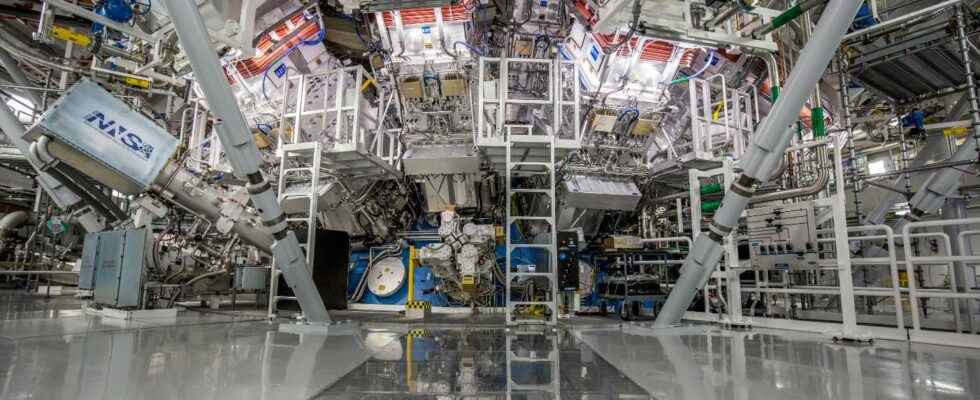The suspense lasted several decades: who would be the first team to develop a nuclear fusion experiment capable of generating more energy than it receives? The American National Ignition Facility (NIF) unveiled its highly publicized success on December 13. It opens doors, but be patient…
The road will be very long until the electricity generation.
Big pressure on fusion
This is a major breakthrough in a young, but extremely complex technological field. Since the end of the 1950s (and after the successes of fission), the various powers of the world and their researchers have been working on the challenge of producing energy by fusion. The latter consists, as its name suggests, in fusing light atoms, in this case isotopes of hydrogen, to obtain helium. This reaction releases a lot of energy, but above all depends a lot on the conditions in which the fusion takes place. Because for it to take place, the merger also requires an abundance of means.
Far, very far from the production of continuous energy (on an annual scale) available today via a fission plant, fusion is still experimental. This is applied research, combining fundamental concepts that are increasingly understood, but difficult to apply. For this same reason, there are many devices in the world capable today or tomorrow of producing fusion reactions: JET in England, Wendelstein 7-X in Germany, ITER in France, the JT-60SA in Japan, EAST in China, the NIF in the United States…
These different devices each have their advantages and their exotic technical names: tokamak, stellarator, inertial confinement. It is the latter that is the subject of the revelation of the day. The National Ignition Facility succeeded in a test on Dec. 5 to generate 3.15 MJ by injecting 2.05 MJ of energy into the device. The reaction has a positive gain greater than 1, and this is a first. It generated more energy than it received locally.
The great containment!
Inertial confinement by laser is a method developed in the 1970s, during the initial discoveries related to the use of lasers. The objective is complex: a ball 2 millimeters in diameter containing the two hydrogen isotopes is trapped in the focused center of the beam of 200 high-power lasers. The ball is contracted to the extreme, heats up to millions of degrees Celsius and eventually reaches the conditions for a fusion plasma.
The fact remains that until this month of December, the control of the laser fluxes, the homogeneity necessary to contract the ball, the injection conditions and the other necessary parameters had only been able to lead to a gain of 0.7 in August 2021. It was already a record, but this time the return is positive (1.5), it is the “ break even “. Never measured, in practice.
A long, long way
Be careful, however, not to extrapolate too much around this search result. Indeed, the energy and electrical revolution linked to fusion is not for tomorrow. Nor for the next decade, despite this ” break even “.
First, there is the challenge of production. To have a functional reactor, overall efficiencies (that is to say with the lasers and the entire installation) of the order of a hundred will be needed. It will also be necessary for this ratio to be able to be preserved and repeated in a stable manner over long periods of time, which represents a titanic technical challenge. The US laser facility, which uses the same global device used by the US military to simulate and test the reactions of US nuclear weapons (France uses an equivalent device with the megajoule laser), is likely to get its own facility in the medium term.
Finally, and this is not really a detail, it will have to be economically viable. The inertial containment program is given a significant budget increase of $624 million for the coming year. However, the project scientists do not imagine a functional device in service on the American network with this method for about thirty years.
Finally, it should be emphasized that this result, while it does indeed represent a major technological breakthrough and a demonstration that highlights decades of preparation, does not invalidate the other methods. ITER, whose construction of the gigantic tokamak in France is encountering great difficulties, uses very different conditions from those of the American experience, but is still relevant today and tomorrow. As the Secretary of Energy pointed out in her remarks on Tuesday, the ” break even will feed other experiments and scientific teams around the world. It’s an exciting and promising track.
Source : Lawrence Livermore National Laboratory

56